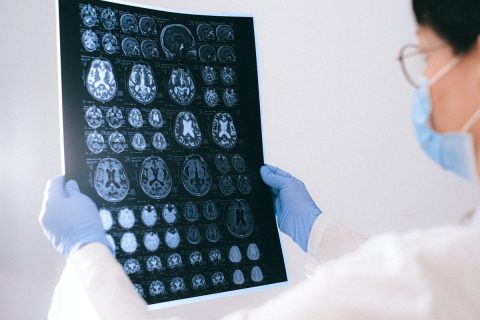Dementia is not just a condition—it’s a journey, often a challenging one, for both those who live with it and those who care for them. It brings about changes that can be confusing and distressing, leading to anxiety, communication difficulties, and a sense of loss. However, amidst these challenges, hope and comfort can be found in the power of memories. In this article, we explore three critical aspects of dementia: the experience of stranger anxiety, the gradual loss of communication abilities, and the role of reminiscence therapy in providing comfort and connection.
Why Do People with Dementia Experience Stranger Anxiety?
Imagine waking up one day in an unfamiliar place, surrounded by people you don’t recognise. For many individuals with dementia, this is not an unusual experience—it’s their daily reality. Stranger anxiety in dementia can be deeply unsettling, not only for the person experiencing it but also for their loved ones and caregivers.
1. Memory Loss and Confusion
At the heart of dementia lies memory loss, a symptom that significantly impacts daily life. According to the Mayo Clinic, as dementia progresses, it becomes increasingly difficult for individuals to remember even familiar faces. This memory loss can lead to confusion, where even close family members may be seen as strangers. The resulting anxiety is often a reaction to the disorienting experience of not recognising the people around them.
2. Cognitive Decline
Dementia affects various cognitive functions, including the ability to process new information and maintain attention. This cognitive decline means that individuals with dementia may struggle to keep track of who people are, especially if they haven’t seen them in a while. This experience can be similar to a child’s natural fear of strangers, where unfamiliarity leads to anxiety.
3. The Need for Familiarity
People with dementia often crave routine and familiarity because these bring a sense of safety and comfort. Sudden changes in the environment or the introduction of new faces can disrupt this sense of security. Such disruptions can worsen stranger anxiety, as the individual may feel that their world is becoming increasingly unpredictable.
How to Help:
- Maintain a Familiar Environment: Surround the person with familiar objects and routines to reduce anxiety.
- Introduce New Faces Gradually: When new caregivers or visitors are necessary, introduce them slowly and consistently.
- Reassurance is Key: Provide gentle, calm reassurance, using familiar names and faces to help the person feel more secure.

Why Do People with Dementia Lose the Ability to Communicate?
Communication is a fundamental aspect of human connection. It’s how we express our thoughts, needs, and emotions. For individuals with dementia, the gradual loss of communication abilities can be one of the most heartbreaking aspects of the condition.
1. The Impact of Cognitive Decline
As dementia progresses, the brain’s ability to process and retrieve language deteriorates. This cognitive decline affects several communication aspects, including finding the right words (aphasia), forming coherent sentences, and understanding spoken language. This can be incredibly frustrating for both the person with dementia and their loved ones.
2. Memory Impairment
Memory plays a crucial role in communication. When individuals with dementia struggle to remember words, names, or even the purpose of objects, it becomes increasingly difficult for them to engage in conversations. This memory impairment often leads to a sense of isolation as the person feels less able to connect with others.
3. Physical Changes in the Brain
Dementia causes physical changes in the brain, particularly in areas responsible for language and speech. For example, the frontal and temporal lobes, key to language processing, can become damaged. This damage can result in slurred speech, difficulty forming sentences, or even a complete loss of verbal communication.How to Help:
- Use Simple Language: Short, clear sentences are easier for individuals with dementia to understand.
- Non-Verbal Communication: Gestures, facial expressions, and touch can convey messages when words fail.
- Be Patient: Allow extra time for the person to respond, and avoid rushing them.
The Power of Reminiscence Therapy in Dementia Care
Reminiscence therapy is a unique approach that taps into long-term memories, often preserved longer than short-term memories in people with dementia. By recalling past events, places, and experiences, this therapy can bring comfort, stimulate cognitive function, and improve overall well-being.
1. The Science Behind It
Even as dementia progresses, the brain’s long-term memory pathways often remain intact longer than short-term memory pathways. Reminiscence therapy leverages this by focusing on memories from earlier in life, which are often more accessible to the person with dementia. Engaging with these memories can help stimulate brain activity, maintain cognitive function, and provide a sense of continuity in the person’s life.
2. Emotional Connection
Reminiscing can evoke positive emotions and provide a sense of identity. For individuals with dementia, who may feel increasingly disconnected from their present surroundings, recalling happy memories can be a source of joy and comfort. It can also help strengthen emotional bonds with caregivers and loved ones, as shared memories bring people closer together.
3. Practical Applications
Reminiscence therapy can take many forms. It might involve looking through photo albums, listening to music from a person’s youth, or discussing significant life events. These activities can be tailored to the individual’s history and preferences, making the therapy highly personalised and effective.

How to Implement Reminiscence Therapy for Dementia Care
Incorporating Reminiscence Therapy into Dementia Care can significantly enhance the quality of life for individuals with memory loss. Tapping into long-term memories can help improve cognitive function and emotional well-being. Here are some effective ways to implement reminiscence therapy:
1. Use Visual Aids
Photos, videos, and memorabilia can trigger memories and encourage discussion, which is crucial for individuals with dementia. Create a memory box filled with personal items like letters, postcards, or souvenirs that hold significance to the person. This tactile approach can stimulate memories and conversation, helping reinforce connections with their past.
2. Music as a Tool
Songs from the person’s past can be particularly powerful in evoking memories and emotions. Create a playlist of their favourite tunes from different stages of their life. Playing music during activities such as mealtimes or relaxation periods can evoke a calming and familiar atmosphere, which benefits dementia patients. Music therapy has been shown to improve mood and reduce anxiety in those with Alzheimer’s and other forms of dementia.
3. Storytelling
Encourage the person to share stories from their past or share your memories to prompt conversation. Use specific prompts like, “Tell me about your first job” or “What was your favourite holiday as a child?” This can help spark memories and foster a deeper emotional connection, which is vital in dementia care. Storytelling can also reinforce a sense of identity and continuity for the person.
4. Incorporate Sensory Experiences
Engage other senses using scents, textures, and tastes familiar to the individual. For example, the smell of fresh bread or a favourite perfume can evoke strong memories and create a comforting environment for dementia patients. Touching fabrics like wool from an old sweater or handling tools from a past hobby can also help bring memories to the surface, enhancing the effectiveness of reminiscence therapy.
5. Create a Memory Scrapbook
Work together with the person to compile a scrapbook that chronicles significant events in their life. Include photos, written memories, and mementoes. This activity helps recall memories and gives the person a sense of accomplishment and a tangible connection to their past. Memory scrapbooks are a valuable tool in dementia care, helping to reinforce personal identity and life history.
6. Use Technology
Digital photo frames that cycle through pictures or tablets loaded with family videos and music playlists can be an engaging way to incorporate technology into reminiscence therapy. Additionally, apps like Ivory, which offer a wide range of brain games and memory exercises, can be particularly beneficial. These games are designed to stimulate cognitive function and provide mental engagement in a fun, interactive way.
Virtual reality experiences that simulate familiar places or past activities can also be a powerful tool in dementia care. They help immerse the person in positive memories, creating a sense of familiarity and comfort. Incorporating gaming technology, such as the brain games available on Ivory, into dementia care can enhance memory recall and improve overall cognitive function, making it a valuable addition to traditional reminiscence therapy methods.
7. Revisit Familiar Places
If possible, take the person to places that hold significance to them, such as their childhood neighbourhood, a favourite park, or a local café they used to visit regularly. Revisiting familiar environments can often prompt memories that may not surface otherwise, providing a meaningful experience for dementia patients and helping to alleviate symptoms of anxiety and confusion.
8. Celebrate Life Events
Focus on positive life events like weddings, birthdays, or graduations. Reliving these moments through discussions or re-enactments can boost mood and reinforce a sense of identity and continuity. Celebrating life events can also provide an opportunity for family and friends to engage in the therapy, further strengthening relationships.
9. Use Themed Reminiscence Sessions
Plan sessions around specific themes, such as ‘school days,’ ‘family holidays,’ or ‘working life.’ Bringing together items, music, and stories related to the theme can help create a focused and enriching experience. Themed sessions can be particularly effective in group settings, offering a structured way to engage multiple individuals with dementia in meaningful activities.
10. Involve Family and Friends
Encourage family members and friends to participate in reminiscence therapy sessions. They can bring their memories and perspectives, which can help deepen the person’s engagement and strengthen relationships. Involving loved ones in dementia care provides emotional support for the patient and helps caregivers better understand the person’s history and preferences.
By integrating these approaches, reminiscence therapy can become a cornerstone of dementia care, helping preserve memory, enhance emotional well-being, and improve the overall quality of life for those with dementia.
Takeaway
Dementia is a complex condition that affects each person differently, but understanding the reasons behind common symptoms like stranger anxiety and communication loss can make it easier to provide compassionate care. Reminiscence therapy offers a way to connect with those living with dementia on a deeper level, bringing comfort and joy through the power of memories.
Whether you’re a caregiver, a family member, or simply someone who wants to understand more about dementia, being informed is the first step in offering the support and care that individuals with dementia need. Remember, empathy, patience, and understanding are your greatest tools in navigating this journey together.




